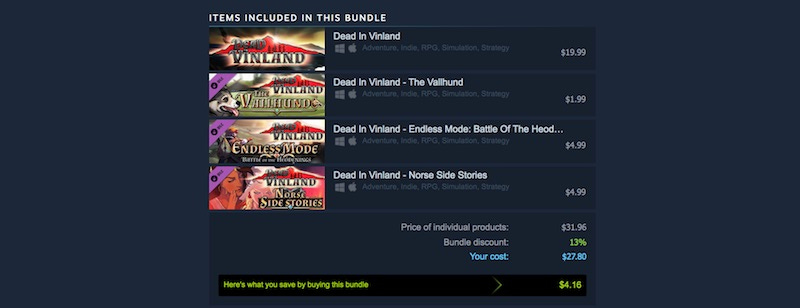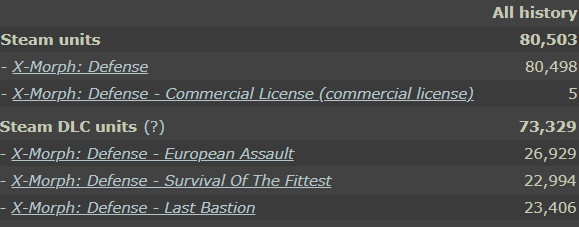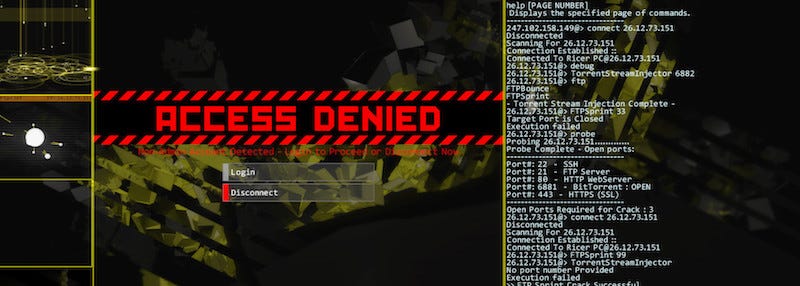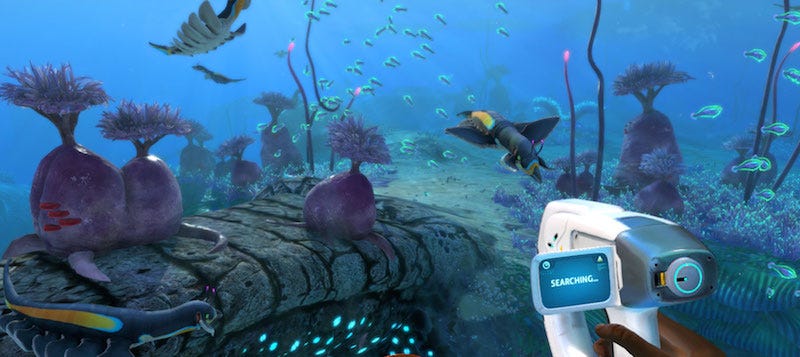
Featured Blog | This community-written post highlights the best of what the game industry has to offer. Read more like it on the Game Developer Blogs or learn how to Submit Your Own Blog Post
The surprising way that paid DLC works 2
So, paid DLC - new levels, modes, etc - specifically those made for PC games on Steam. It's way better for devs than you think, and here's why!

[Hi, I’m ‘how people find your game’ expert Simon Carless, and you’re reading the Game Discoverability Now! newsletter, which you can subscribe to now, a regular look at how people discover and buy video games in the 2020s.]

OK, so here’s a ‘got more data, have changed my mind’ post. And it’s on paid DLC - new levels, modes, etc - specifically those made for PC games on Steam.
When I originally covered paid Steam DLC back in October, I was looking at lifetime attach rates as of 2017 as 5%-15%. This sounds… kinda unattractive, in my view. So if your game sold 50,000 copies, according to some people I was talking to shortly after their DLC launch, you might get 5,000 copies of the DLC sold.
But the lens I was looking at DLC through was subtly wrong. I was looking at ‘how many people who already bought the game also pick up the DLC?’, or ‘Checking a little while after DLC launch, what happened?’ This isn’t actually why paid DLC can work so well.
I’ve since found an enthusiastic group of devs who insist that paid DLC is good for business, and good for their games. The devs all have something in common:
Their games launched decently on Steam, so have a fair amount of ‘banked’ wishlists.
The devs are practical businesspeople who actively take advantage of Steam sales and bundling.
They’re not afraid, especially later on in the lifecycle of the game, to discount more in order to play up the ‘deluxe’ versions of the game with all DLC bundled in it.
So let’s check out some numbers…
Case Study: X-Morph: Defense

Pawel Lekki of EXOR Studios (whose upcoming game Riftbreaker was one of the most popular demos in the Steam Summer Game Festival!) was kind enough to explain to me why DLC has been an integral part of his strategy - for both tower defense/shooter hybrid X-Morph: Defense and previous game Zombie Driver HD.
We decided to focus on X-Morph, because Zombie Driver is quite an early Steam release (2012 and earlier!) and has some data wrinkles as a result. For X-Morph, which was released in 2017, the base game is $19.99, and the game plus all the DLC/soundtrack is 10% off at $35.95 under ‘normal’ U.S. pricing.
So here’s the lifetime Steam X-Morph: Defense units for both game and DLC:

So this DLC lifetime attach rate is about 33% of the full game - an impressive number. And at any given time since the DLC launched, Pawel says that up to 50% of sales are for the Complete Edition.
He also noted: “During the Summer Sale, when we run the game and DLCs at 75% off, the DLC attach rate is about 60%.” Here’s the Steam sales for the week up to June 29th, 2020 to illustrate this:

Why are the attach rates so good? Well, for starters, all of the DLC was released fairly swiftly after the original game - the third launched in August 2018. So there’s been almost two years to sell the regular and Complete editions, with plenty of ‘X% off’ sales - which increase the attach rate.
Secondly, the DLC seems fairly ‘meaty’. It’s new modes and new mini-campaigns in new settings. So the value seems good to people who’ve found the game for the first time, and want to make a buying decision.
So, Pawel concludes this is the key point: “I think that most people make only one purchase and never return again, so if the DLC isn't available when they buy the game, that sale is lost… I think that DLC has more value as a long tail extension than as a singular launch event e.g. DLC sales in week one after a DLC’s release.”
This is precisely the point I missed in my initial dismissal of paid DLC. It’s all about increasing $ yield smartly for the ‘long tail’ of sales, and for post-launch players finding the game for the first time.
Case Studies: More paid DLC data

And that’s not all! Here’s some notable extra ‘long tail’ wins from paid DLC, courtesy of other devs who’ve been talking to me:
Chris Wright from indie publisher Fellow Traveler noted "For Hacknet [released in 2015] we did a major expansion about 18-20 months after release. Looking at the last three years of data, [DLC/soundtrack] represents roughly 1/3 of the revenue to the base game's 2/3.”
My buddies at No More Robots have one game with DLC, Not Tonight - it’s a $19.99 game with a jumbo-sized $9.99 story DLC called One Love. That DLC is sporting a 21% attach rate during non-sale times, and a 36% attach rate during the Steam Summer Sale (when both game and the ‘complete pack’ were discounted by half). Again, decent.
Another data dump, thanks to Bruno at CCCP: “We did 3 DLCs for Dead in Vinland. The base game was $19.99. The first DLC was $1.99, and the other 2 were $4.99. The last one was released about 1 year after the game's [spring 2018] release. Here's the % of base [lifetime] game owners who bought each DLC: DLC 1: 39% DLC 2: 25% DLC 3: 28% The sales of the DLC are about 14% of the total [lifetime] revenue of the game.”
On this final point from Bruno - it’s true that the total percentage of lifetime revenue for DLC often ends up being smaller. But if you track revenue from the point you launch the DLC, it obviously looks quite a bit better.
Conclusion - when should you do paid DLC?

Paid DLC isn’t for everyone. I think it works particularly well for in-depth strategy or simulation games where you can build out new ‘level packs’ and scenarios, and for cases where you can stack DLC so the ‘complete pack’ is 1.8x to 3x the normal game cost.
There are other options instead of paid DLC too, like standalone expansions/semi-sequels (see: Subnautica: Below Zero) or simply building GaaS-style updates into the core game and not charging any more $ for it (see: Clone Drone in the Danger Zone, or any number of other titles!)
But here’s when I think you should do paid DLC:
You’re a small or medium-sized studio who self-published their game to some success/wishlists.
You have a way to produce one or multiple pieces of DLC with a subset of the same team, and your ‘run rate’ for producing that content is relatively low, dollar-wise.
You are good at preventing scope creep. (You need to be organized and methodical, not accidentally timesinking the DLC, so it takes up 50% of the time it would take to make a new game.)
The earlier you launch the DLC and the longer you market it on your game’s title screen and alongside sale discounts, the better the results. And remember: the number of public reviews on Steam pages for DLC are not representative of the normal ‘20-70 sales per review’, partly because of the way DLC is sold in bundles. So don’t look at those for sales data.
The main reason more people don’t do more paid DLC is, I think, that it’s a LOT of moving parts - especially if you’re publishing your game on console as well. And if you’re an indie publisher, you already have enough SKUs to worry about without multiplying it by another 3 or 4.
Also for multi-platform games, I’m not 100% sure if DLC is as well signposted in digital storefronts on console (please tell me!). Though some console titles - for example Japanese music games like Taiko No Tatsujin - have hundreds of dollars of paid DLC accessible in-game, which clearly can spike your revenue per player in F2P whale-style ways.
Anyhow, now you know why some people swear by paid DLC. So maybe consider it if your game does well on launch?
Read more about:
Featured BlogsAbout the Author(s)
You May Also Like







.jpeg?width=700&auto=webp&quality=80&disable=upscale)








